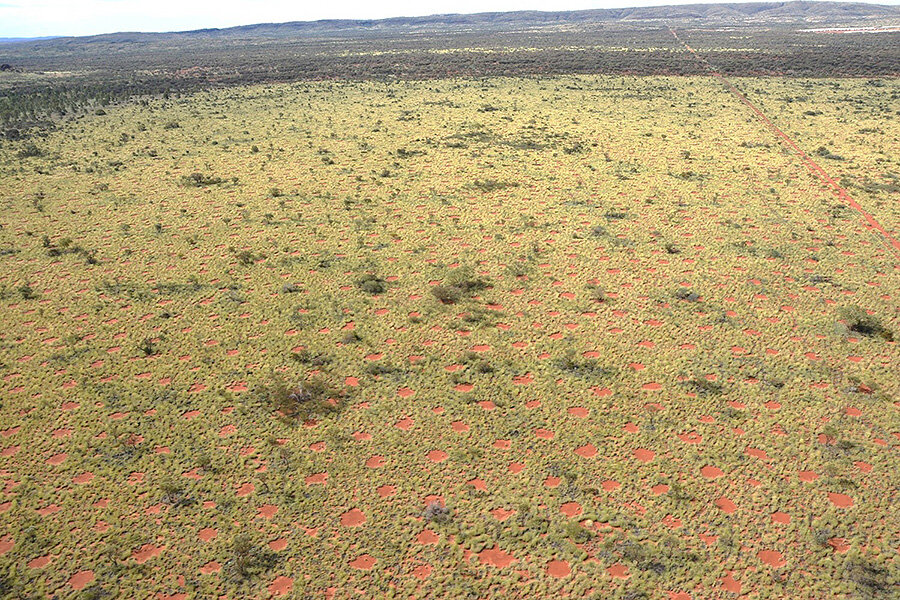Bizarre 'fairy circles' appear in Australia: Where did they come from?
Loading...
"Fairy circles," the distinctive bald spots dotting the Namibian grasslands, were once mysterious not only for their striking patterns, but their exclusivity: no other landscape in the world seemed to have the same six-sided honeycombs.
But more than 6,200 miles away, a new discovery in the Australian outback has helped researchers crack the code, supporting the theory that sparse grasses actually organize themselves into the unusual structures to deal with their dry environment.
Scientists from the Helmholtz Centre for Environmental Research (UFZ) in Leipzig, Germany, were tipped off by aerial photos taken near Newman, Australia, where regularly-patterned barren patches resembled those seen in southern Africa, in similar transitional landscapes where desert and grasslands meet.
"The interesting thing about fairy circles is that they are spread with great regularity and homogeneity, even over vast areas, but they occur only within a narrow rainfall belt," said UFZ researcher Stephan Getzin, the lead author of a study published Tuesday in the Proceedings of the National Academy of Sciences, in a press release.
Some scientists have suggested that the unique formations are the product of hungry ants or termites, while others thought toxic gases rising up from the earth might be killing off plants in oddly regular patterns. But in Australia, the similar circles were comparatively bug-free, helping Dr. Getzin argue against those theories in favor of a third: the plants are organizing themselves to cope with dry conditions. And if that theory is correct, his team says, there must be more.
First, Getzin and his Israeli colleagues Hezi Yizhaq and Ehud Meron, from Ben-Gurion University of Negev, needed to determine that the vegetation patches were the same type found in Namibia. They used aerial photos, pattern analysis, and mathematical modeling to confirm that was the case.
Soil conditions are different in the two locations, but the team believes that the same "instability" in water access drives vegetation into similar-looking patterns, powered by two different bio-mass water feedback systems.
In the Australian desert, soil unprotected by vegetation forms a hardened layer, making it almost impossible for water to seep in and lead to new growth. Where grasses have taken hold, however, they cool down the earth, and small colonies can take hold.
Namibia, on the other hand, is sandier, helping the water seep in. Even under barren areas, reservoirs will build up underground, which then diffuse to nearby clumps of vegetation.
"The details of this mechanism are different to that in Australia," Getzin says. "But it produces the same vegetation pattern because both systems of gaps are triggered by the same instability." That finding supports a universality principle of pattern-formation theory, the team argues, which suggests they could find it demonstrated in other dry areas, too.
"For a long time, ecologists weren't convinced that plants in dry areas could organize themselves because the theoretical principles for these processes lie in physics," he explains. "But it has since become increasingly clear how important this process is."







